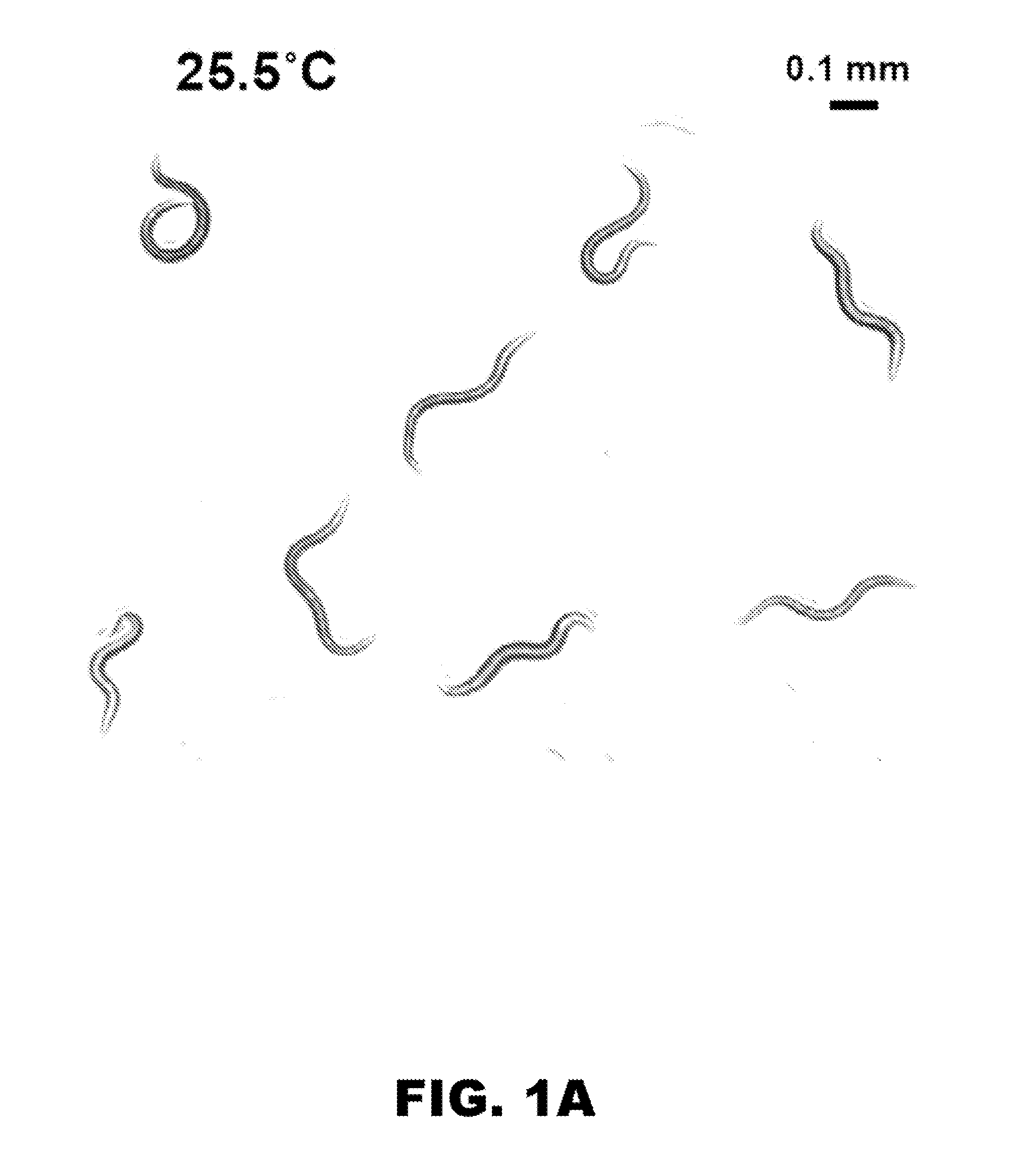Methods for identifying modulators of lifespan and resistance to oxidative stress
a technology of oxidative stress and modulators, applied in the field of methods for identifying agents, can solve problems such as an enormous problem of aging, and achieve the effects of increasing survival, prolonging lifespan, and increasing survival
- Summary
- Abstract
- Description
- Claims
- Application Information
AI Technical Summary
Benefits of technology
Problems solved by technology
Method used
Image
Examples
example 1
Ten-Fold Increased Lifespan of Age-1 Null Mutant Nematodes
[0096]To date, the greatest extensions of longevity by single mutations have been about 2.6-fold in C. elegans, nearly two-fold in Drosophila, and only about 1.3- to 1.5-fold in mice. It is clear, however, that these mutants do not define the upper limit for life extension, since combinations of two or three interventions, e.g. augmenting such mutations with germ-cell ablation or dietary restriction, can result in life extension by as much as 6-fold in the nematode. Similarly, the greatest life extension obtained thus far in mice, 1.7-fold, required the combined effects of a life-extending mutation and caloric restriction. Many long-lived mutations also confer resistance to a variety of stresses, whereas naturally occurring genetic variants, known as longevity QTLs, display selective resistance to some stresses and not others.
[0097]Nematode strains were obtained from the Caenorhabditis Genetics Center (CGC; Minneapolis, Minn....
example 2
Exceptional Stress Resistance of Age-1 Null Mutants
[0103]To determine whether these extreme-longevity strains were also unusually resistant to stresses, day-2 adults were subjected to variety of stresses. First, thermal tolerance was tested by shifting the temperature from 20° to 35.5° C.. None of the three age-1 mutant alleles tested were more tolerant of high temperature than wild type worms (not shown). Next, resistance to two oxidative stresses, and resistance to an electrophilic stress associated with lipid oxidation were tested. For this, young adult worms were transferred to wells of a 24-well plate (25 worms / well) at 9 days post-hatch for second-generation age-1(mg44) homozygotes derived from strains SR808 and GR1168; at 19 days for second-generation age-1(m333) homozygotes derived from strains SR809 and DR722; and at 5 days for all other strains. Worms were maintained at 20° C., in S Medium (S Buffer plus 0.5% cholesterol) also containing 3 or 5 mM hydrogen peroxide, 10 mM...
example 3
A PI3K Requirement for Oogenesis
[0106]Homozygous-null mutants of age-1 were fertile when maternally protected, yielding 150±14 (SEM) progeny per SR808 (mg44) hermaphrodite, and 131±13 progeny per SR809 (m333) parent. From >1000 of those offspring, born of age-1 null parents, no progeny were produced (differing from their parents, each P<0.005), and neither embryos nor unfertilized oocytes were laid. To further examine the role of age-1 during oogenesis, worms were stained with a nuclear DNA dye so that germ cell nuclei could be visualized. For this, worms were washed and fixed according to the protocol of Finney and Ruvkun (Cell (1990) 63:895). DAPI (4′,6-diamidino-2-phenylindole) was added to PBS (phosphate-buffered saline, pH 7.0) to a final concentration of 0.1 μg / ml, and worms were incubated for 30 min at room temperature with this mixture. Worms were then washed 3× with PBS and GIF images were captured on a Nikon Cool-Pix digital camera through a Nikon Eclipse E1000 fluorescenc...
PUM
| Property | Measurement | Unit |
|---|---|---|
| Temperature | aaaaa | aaaaa |
| Length | aaaaa | aaaaa |
| Time | aaaaa | aaaaa |
Abstract
Description
Claims
Application Information
 Login to View More
Login to View More - R&D
- Intellectual Property
- Life Sciences
- Materials
- Tech Scout
- Unparalleled Data Quality
- Higher Quality Content
- 60% Fewer Hallucinations
Browse by: Latest US Patents, China's latest patents, Technical Efficacy Thesaurus, Application Domain, Technology Topic, Popular Technical Reports.
© 2025 PatSnap. All rights reserved.Legal|Privacy policy|Modern Slavery Act Transparency Statement|Sitemap|About US| Contact US: help@patsnap.com



